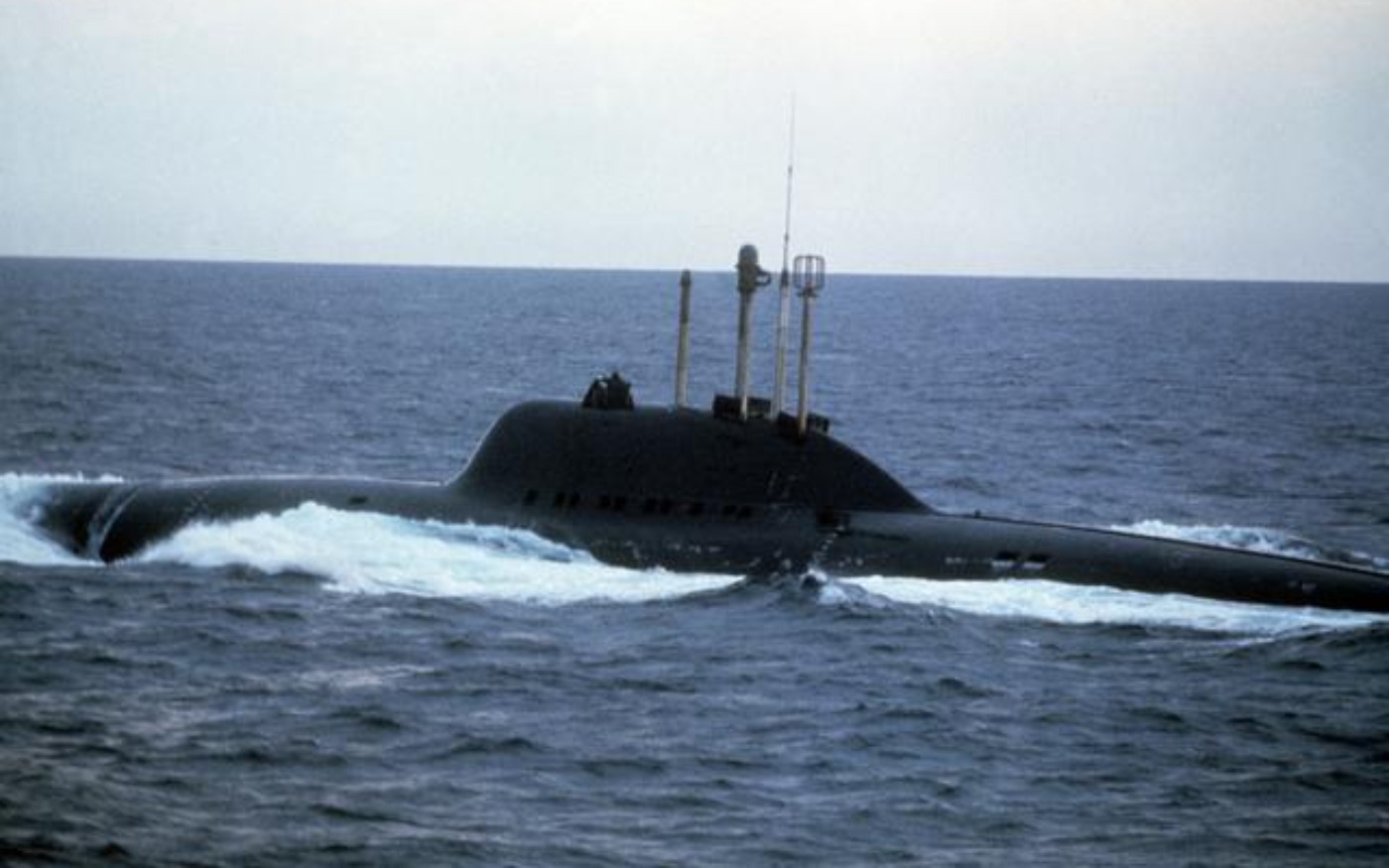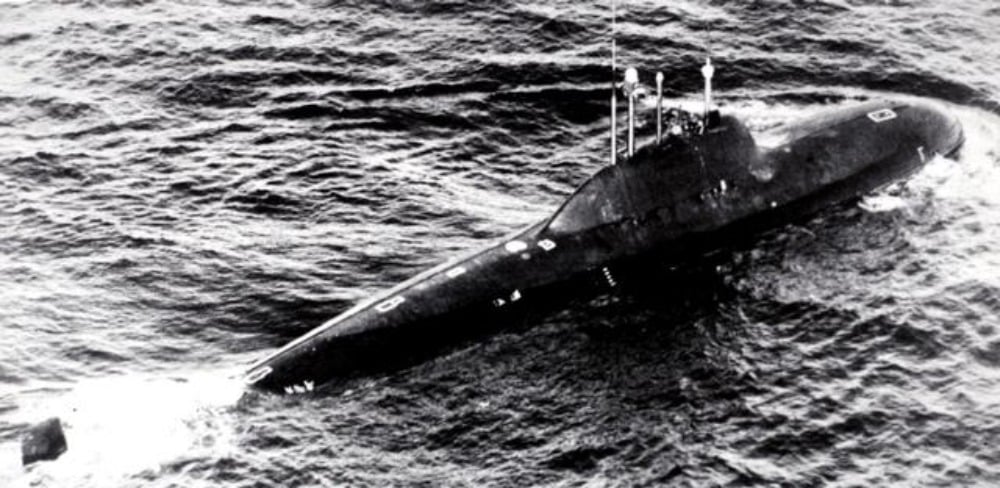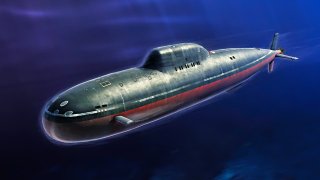A Russian Nuclear Submarine Sank: Some of the Crew Survived, But Couldn't Be Saved
The 2000 sinking of the Russian submarine Kursk in the Barents Sea remains one of the worst naval disasters in Russian history.
What You Need to Know: The 2000 sinking of the Russian submarine Kursk in the Barents Sea remains one of the worst naval disasters in Russian history.

-The nuclear-powered Oscar II-class submarine sank after a torpedo exploded in its weapons room during a naval exercise, killing 118 crew members. While 23 sailors initially survived in a rear compartment, they perished due to slow and inadequate rescue efforts by the Russian Navy, which even refused early offers of Western assistance.
-The disaster was traced to a faulty hydrogen peroxide-fueled torpedo, though conspiracy theories emerged, including claims of a collision with a NATO submarine. Moscow's cover-up of the tragedy damaged President Vladimir Putin's reputation and marked the start of a pattern of misinformation.
The Kursk Tragedy: Russia’s Worst Submarine Disaster and Its Lingering Conspiracy Theories
The loss of the Titan submersible that was operated by American tourism and expeditions company OceanGate sometime back served as a reminder that the ocean depths aren't all that friendly to visitors.
Military submarines are also arguably one of the most dangerous environments to work in, as the crews literally operate in a metal tube surrounded by water at depths and pressures that rightfully should crush the boat. Even a minor mistake can be deadly – a fact that is noted as there have been several dozen mishaps with military submarines.
Throughout the Cold War, there had been a number of tragic accidents involving Soviet submarines due to lax safety measures. Since 2000, the Russian Navy further had its own share of submarine disasters. The first one was also the worst when in August 2000, the nuclear-powered Kursk sank in the Barents Sea due to an explosion in its torpedo room, which killed all 118 of its crew.
The submarine – named after the July 1943 Battle of Kursk, the largest tank engagement in history – was one of eleven nuclear-powered Project 949A Antey (Oscar II) cruise missile submarines built at Seveorvinsk and was one of the five assigned to the Russian Navy's Northern Fleet.
The other six were assigned to the Pacific Fleet, and while three more were planned, construction was eventually halted.
Disaster Unfolds
The boat was operating in the northern waters of the Barents Sea and was set to take part in a major exercise – the first since the dissolution of the Soviet Union nine years earlier. The exercise involved four attack submarines, the Northern Fleet flagship battlecruiser Pyotr Velikiy, along with numerous smaller craft. On August 12, at 11:28 local time, an explosion occurred as the crew was set to fire torpedoes.
Most of the 118 members of the crew were reported to have been killed instantly.
What About the Rest of the Crew of the Kursk?
As the cruise missile submarine sank in relatively shallow waters that were just 350 feet (108 meters), a total of 23 sailors were able to flee to a rear compartment of the Kursk, and wait for rescue.

However, the response from the Russian Navy was slow, and the Kremlin even turned down offers of Western assistance.
Instead, the Russians sent mini-submarines, which made repeated but futile attempts to hook onto the Kursk's submarine escape hatch. Only after a week of vain attempts did Moscow invite Norwegian divers to assist. They were able to open the hatches in just hours, but it was too late to save anyone.
The 23 sailors were all dead.
What makes matters all the worse is that some Russian navy officials suggested that the crew members who survived the initial blast could have been alive for at least three days. However, an "official investigation" later stated that all would have died of carbon monoxide poisoning within eight hours. Moscow has been accused of covering up the fact that its response resulted in the unnecessary deaths of the crew.
Key Kursk Facts
The outer hull of the Oscar II submarine was made of high-nickel, high-chrome content stainless steel that was .33 inches (8.5mm) thick. It had exceptionally good resistance to corrosion and a weak magnetic signature, which helped prevent detection by Magnetic Anomaly Detection (MAD) systems. There was also a 6.5-foot (2-meter) gap between the outer hull and the two-inch (50.8mm) steel inner hull.
The Oscar II boats are fitted with a seven-bladed propeller system, which made it far quieter than the Oscar I’s four-blade propeller. The subs were powered by two pressurized water-cooled reactors that powered two steam turbines and delivered 73,070 kw (98,000 shp) to two shafts.
The Soviet-designed boats were also built with at least ten separate compartments that could be sealed off from each other in the event of an accident. Those compartments were numbered in sequence from fore to aft. As with other Soviet-era submarine designs, the Oscar was equipped with a bridge to open to the elements on the top of the sail, as well as an enclosed bridge forward of the station in the sail for use in inclement weather.
Salvage Operations
It reportedly cost around $65 million to recover the wreck, which required assistance from the Dutch marine salvage companies Smit International and Mammoet. It was the largest salvage operation of its type ever accomplished, yet, it took the Mammoet-Smit International Consortium just over 15 hours.
The Kursk was lifted on steel cables lowered from a Giant 4 barge. The effort required clamps under the sub, while its protruding conning tower and tail fins were tightly fitted into holes carved in the vessel.
"I'm very proud that we made a success," Frans van Seumeren, president of the Dutch Mammoet company, told reporters in October 2001. "We worked hard, sometimes it was difficult but in the end we succeeded."
Torpedo Explosion To Blame?
After the Kursk's wreckage was recovered, the explosion was ultimately traced to one of the boat's Type-65-76A torpedoes.
Though that weapon is powerful enough to destroy an aircraft carrier with a single hit, the Soviet Union inexplicably designed the torpedo to run on hydrogen peroxide fuel, which is highly volatile and requires careful handling.
According to multiple reports, the crew had not been adequately trained to handle those torpedoes or the fuel.
Conspiracy Theories Have Swirled
In the years that followed the Kursk accident, Russian media claimed that two U.S. submarines as well as a British sub had been spotted in the area near the Russian naval exercise when the Kursk disaster occurred. U.S. officials have acknowledged that an American submarine was in the area but denied that it collided with the Kursk.
NATO officials said the same thing about U.S. and U.K. vessels.
Yet, it was two years ago, in November 2021, that retired Russian Admiral Vyacheslav Popov, the former commander of the Russian Navy's Northern Fleet claimed that the 2000 Kursk submarine disaster was caused by a collision with a NATO sub. That unproven allegation defies the official conclusion that Russia's worst post-Soviet naval catastrophe was actually the result of a faulty torpedo.
Popov was commander of the Northern Fleet when the Kursk exploded and sank during naval maneuvers in the Barents Sea.
He said in an interview with the Russian state media RIA Novosti news agency that it was his opinion that a NATO submarine had been shadowing the Kursk and inadvertently bumped into the Russian boat. Popov was unable to identify the Western submarine or offer any evidence, and he also acknowledged that he had no proof to back up the bold claim.
At the time of the interview, Kremlin spokesperson Dmitry Peskov refused to comment on Popov's claim and instead pointed to the official probe.
Of course, Popov had several good reasons to point fingers – most notably that he was blamed for his slow and bungled response following the August 12, 2000 incident that reportedly involved two explosions.
It Has Been Called Putin's "First Lie"
Moscow's cover-up and its poor handling seriously hurt Russian President Vladimir Putin's prestige, and it has even been seen as a "turning point" for modern Russia.
In 2015, Russian lawyer Boris Kuznetsov went so far as to describe the incident as Putin's "first lie," but it clearly wasn't the Russian leader's last one.
"The lies began with the sinking of the Kursk," Kuznetsov, who represented the families of 55 of the Kursk's seamen, told Radio Free Europe. "When the Kursk sank, the government began interfering with the legal and law-enforcement systems. The government began gathering all the mass media under its control. The entire process of undermining democracy in Russia, in many regards, began with this."
Kuznetsov has been forced to leave Russia after he was prosecuted for allegedly revealing state top secrets. The criminal case against Kuznetsov was reportedly initiated at the personal request of Federal Security Service director Nikolai Patrushev.
In February 2008, Kuznetsov was granted asylum in the U.S. – but in 2013 Moscow issued new arrest orders for him. In other words, there was a conspiracy involving the Kursk, but it involved the efforts to bring justice to the families of the crew, not one involving NATO.


